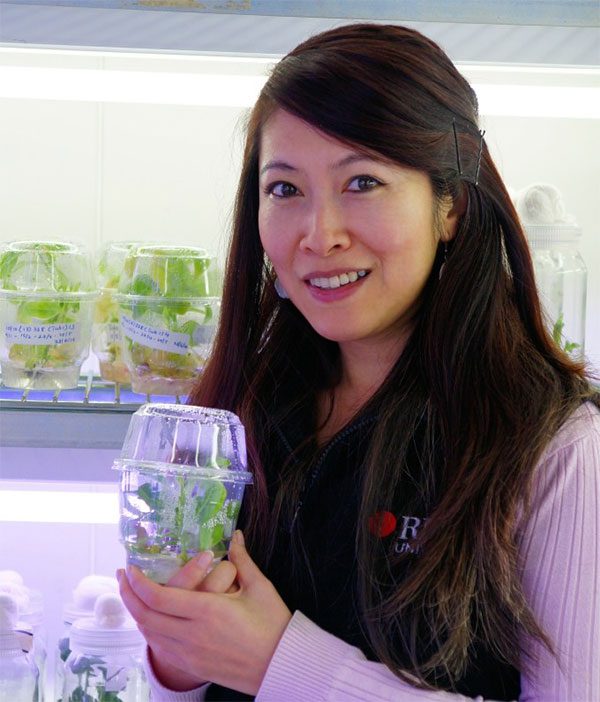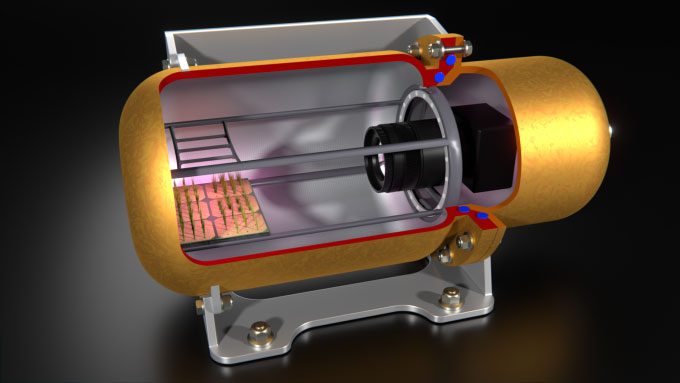Associate Professor Tien Huynh from the School of Science at RMIT University plays a key role in advising on crop selection and analyzing growth parameters of plants involved in the Moon Planting Experiment Project.
One of the crops being considered by researchers for the lunar mission is canola, scientifically known as Brassica napus. This plant produces yellow flowers and is cultivated for food production and industrial use. Preliminary results indicate that canola could be a promising candidate for survival on a journey to the Moon or Mars due to its ability to withstand extreme temperatures and rapid germination rates.

Associate Professor Tien Huynh leads the research team selecting crops for the Moon. (Photo: RMIT)
In an interview, she shared that some plants develop differently under varying gravitational conditions, but researchers still do not fully understand how and why. The Moon has a harsh environment with a thin atmosphere, rapid temperature changes, and relatively poor soil quality. Therefore, any plant intended for cultivation on its surface must be very resilient.
The research team has currently tested over 11 plant species, including some native plants, resurrection plants, and crops from various regions around the world—species identified in research documents as fast-germinating. “Canola was chosen because it meets the requirements with a germination rate of over 95% within 12 hours after the freeze-thaw cycle,” she explained.
Associate Professor Tien Huynh has expertise in the conservation of various plants and fungi, aimed at storage and protection from harsh conditions. In addition to crop selection, she participates in analyzing growth rates and survival capabilities of the plants and engaging the community in conducting experiments with children, encouraging the younger generation to engage with science.
“We are experimenting with different substrates for plant growth and packaging for transport to stabilize the seeds. We will then work with engineers to optimize sensors that measure plant development,” she stated.
Dr. Graham Dorrington from the School of Engineering at RMIT University, co-founder of Lunaria One and the technical lead of the project, mentioned that seeds and plants will be transported in a specially designed and hermetically sealed chamber equipped with sensors, water, and cameras. This sealed chamber is expected to be sent aboard a lunar lander in 2026.
“The major challenge for us is designing the chamber to maintain the suitable conditions for seeds to germinate on the Moon’s surface, where external surface temperatures can range from highs of 80°C to lows of -180°C,” he noted. According to Dr. Dorrington, the chamber needs to be lightweight (not exceeding 1.5 kg), capable of operating with minimal energy, while also transmitting data to Earth through the lander at data rates under 40 kilobits per second.

Illustration of the ALEPH-1 chamber design from the inside. (Photo: Arthur Georgalas, RMIT University, 2022).
After landing on the Moon’s surface, the growth and overall health of the plants will be monitored, and data and images will be sent back to Earth.
The research on whether seedlings can grow on the Moon has always captivated biologists. Professor Ian Burnett, Deputy Director at RMIT University, stated that this interdisciplinary research could provide valuable insights to support agriculture in extreme climates on Earth.
Aspiring scientists and students from around the world will be invited to use data from the project to conduct their own experiments on which plant varieties might thrive best on the Moon.
The Australian Lunar Experiment Promoting Horticulture (ALEPH) is led by the startup Lunaria One in collaboration with RMIT University, Queensland University of Technology, and the Australian National University. The project commenced in September 2021 and is expected to be completed by March 2026. The Australian Space Agency is funding the project with AUD 3.6 million (nearly 57 billion VND).



















































